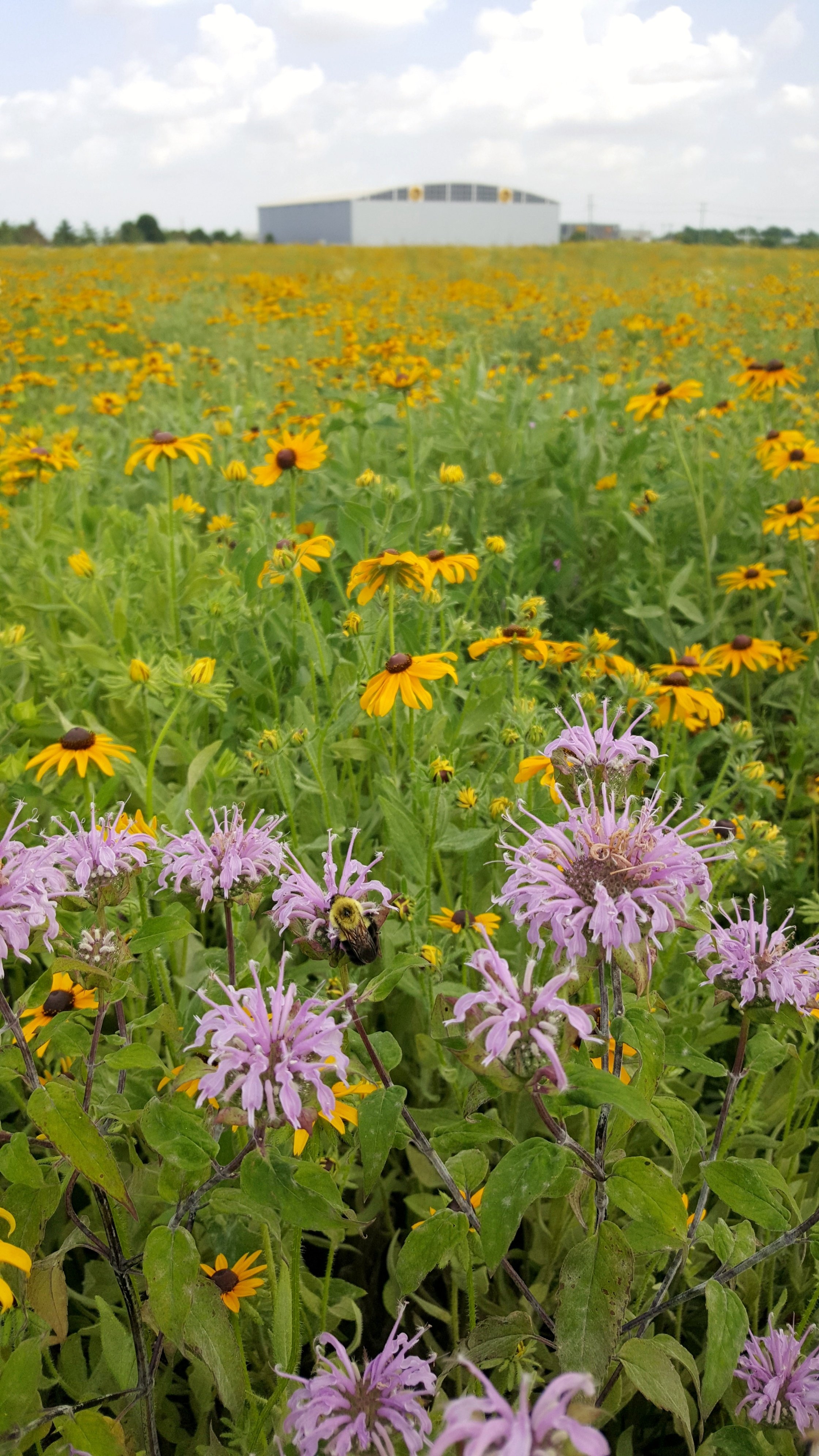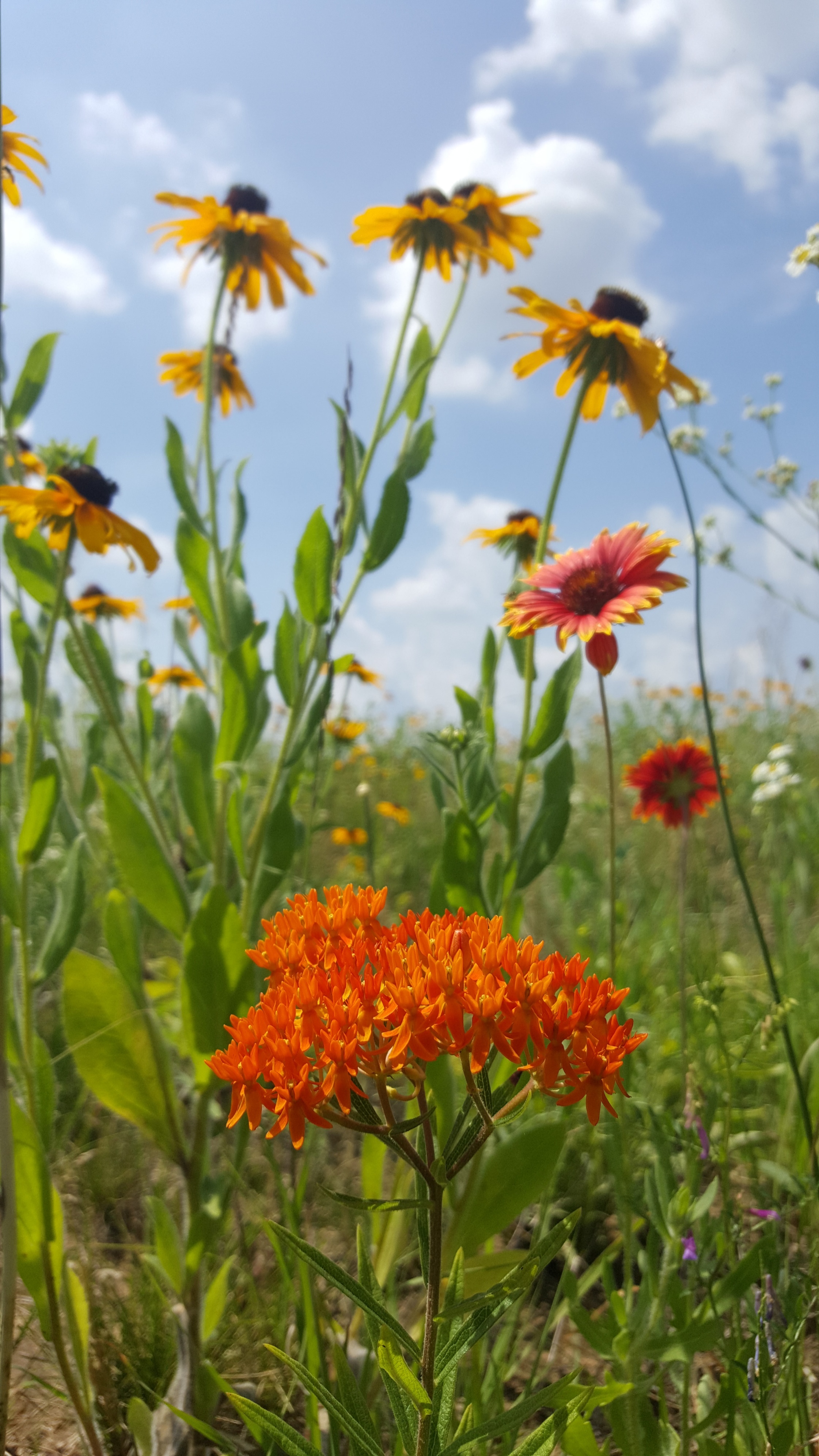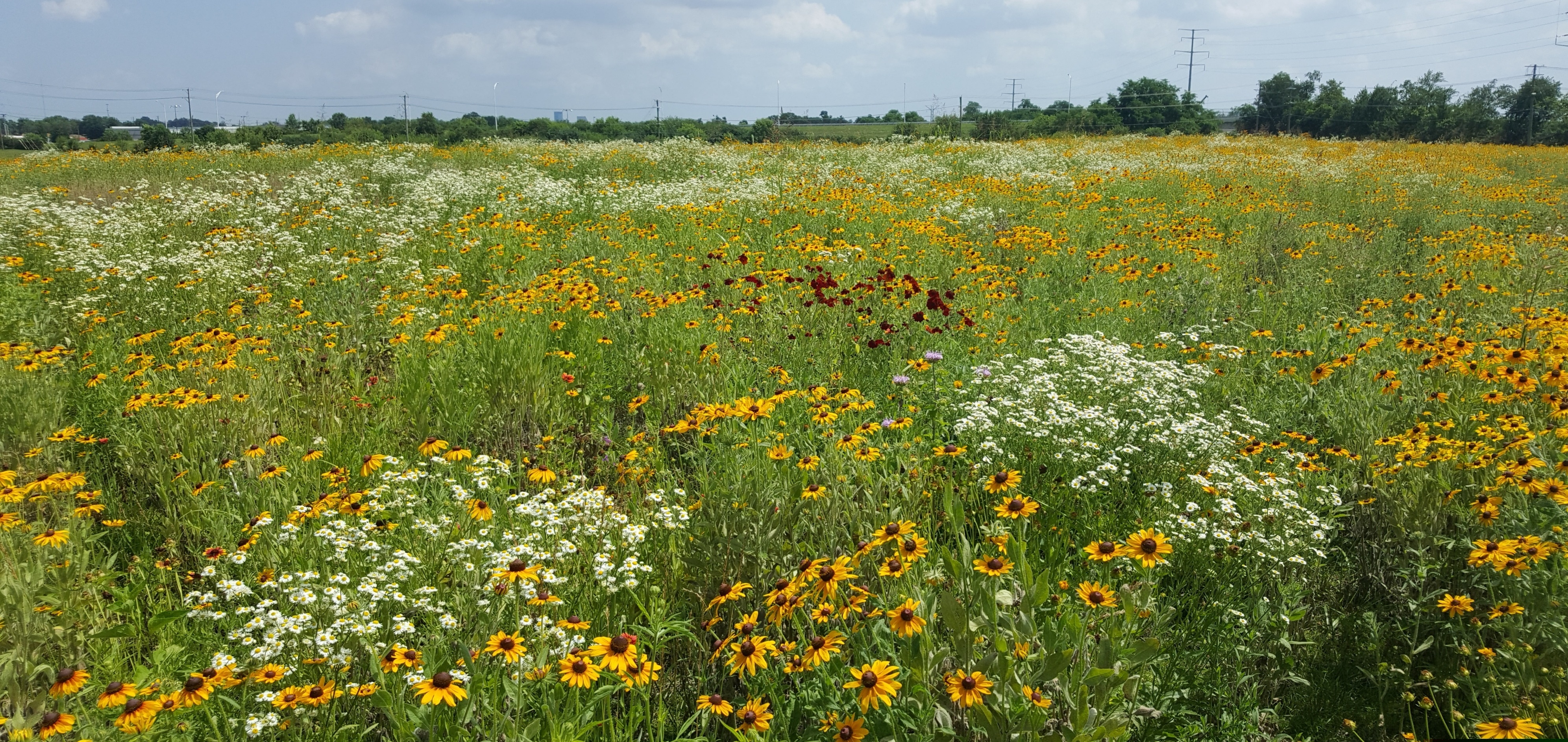 A prairie can transform the makeup of a property, by taking a piece of ground that would typically be turf grass and converting it into a habitat for wildlife that will give much more back to the environment. On large commercial properties, there can be hundreds of acres of turf grass requiring frequent service visits. Converting an area into a Prairie can add beautiful contrast to the property, reduce lifetime costs, and provide a sustainable environment for years to come. Prairies are becoming more and more common, but not all are installed or maintained correctly.
A prairie can transform the makeup of a property, by taking a piece of ground that would typically be turf grass and converting it into a habitat for wildlife that will give much more back to the environment. On large commercial properties, there can be hundreds of acres of turf grass requiring frequent service visits. Converting an area into a Prairie can add beautiful contrast to the property, reduce lifetime costs, and provide a sustainable environment for years to come. Prairies are becoming more and more common, but not all are installed or maintained correctly.
Installing a prairie takes planning and patience to do it right. Cutting corners may save money up front, but the results will be a mess and the prairie will fail. Prairies also take years to fully develop; they are dynamic systems and change appearance over time. It is important to know what to expect when planting a prairie.
What are the big phases of Installation?
- Initial Site Meeting and Design: What does the lay of the land provide? What are the client’s expectations? Seed selection is a critical step in the Design phase, species selection and density will dictate how the Prairie will grow-in as well as survive for the years to come.
- Site Prep: A standard program includes 4 Herbicide applications to eradicate all Grass and Weeds from the selected site. These herbicide applications can be spread 30 days apart in the growing season, and less frequently in the dormant winter months. Understand that this will
 result in bare ground while the site is being prepared for planting.
result in bare ground while the site is being prepared for planting. - **In the case the first herbicide application is made in the Fall, a cover crop of Winter wheat or Oats can be planted for aesthetics and erosion control over the dormant winter months.
- Roughly 4-8 months after the first herbicide treatment, it is time for the No-Till, seed application with a Mechanical drill. Customized seed blends can be tailored to the Client’s needs and wants.
- In some cases, this may involve adding annual flowers for Year 1 to produce color early in the process and limit the appearance of bare ground to a minimum.
What are the phases of prairie development?
- In Year 1: The native grasses spend their energy developing an extensive root system and produce very little foliage. Early blooming plants like coreopsis and cone flowers will provide splashes of yellow and purple. It is common for the prairie to look sparse with areas of bare ground between the plants. Because of the bare ground, weed management is vital.
- In Year 2: This is when the flowers really come into their own and provide a summer sea of gold. The prairie starts filling in and there is less bare ground.
- In Year 3: The prairie should have developed a healthy stand of grass and perennial color as slower growing perennials mature.
- In Year 5: Prairies are dynamic systems and change over time. Dominant species will change from season to season. Certain flowers will be prolific one year and seemingly absent the next, only to return in abundance in other years.
- In Year 10: The prairie should be fully functional and producing seasons of color and habitat for wildlife.

What kind of maintenance do prairies require?
- Prairies are low-maintenance, not maintenance-free
- In Years 1 & 2: The bare ground will attract weeds, so spot spraying will be required. Occasionally weed seed left in the seed bank can germinate and out compete desired young seedlings for nutrients and cause a stand failure. Luckily most weeds are annuals whereas prairie plants are perennials. Mowing at 6” height may be necessary in some cases the first year to keep the weeds down and stop them from reseeding. This will exhaust the seed bank and allow the prairie plants the flourish. Even if the prairie is relatively weed free, a 6" cut in late spring is recommended for the first couple years.
- In Year 3 and beyond: Bare ground will be at a minimum, but there is still maintenance involved. Invasive species will continue to break through and will involve hand weeding and/or foliar herbicide applications. While invasive species control will always be needed, it is still far less maintenance than a typical field of turf grass.
- Prairies require being cut or burned to the ground every 3 - 5 years. Burning prairies every few years is widely recommended, but not a viable option for most properties. Our recommendation is to divide the prairie into three or more sections and cycle through mowing each section at 6" in height. This rotation cycle provides the prairie with important revitalization to the cut sections, while continuing to provide established habitat in the uncut sections.
If you would like to learn more about installing a prairie on your property, fill out this form or give us a call at 859-254-0762. We can also provide consultation on fixing a prairie that wasn't properly installed.

